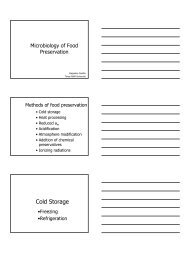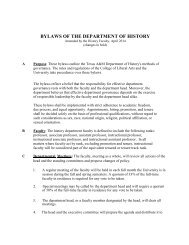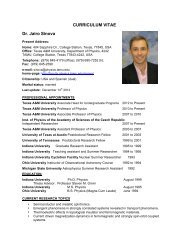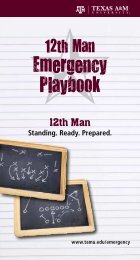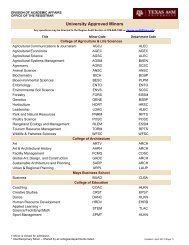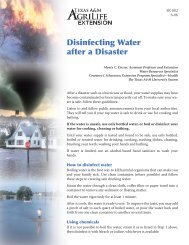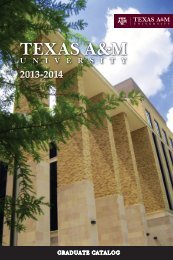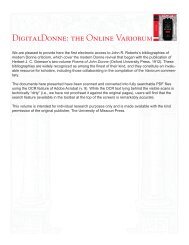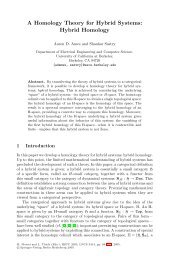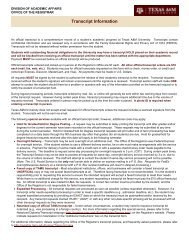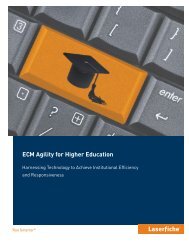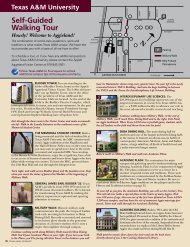ODP Final Technical Report - Ocean Drilling Program - Texas A&M ...
ODP Final Technical Report - Ocean Drilling Program - Texas A&M ...
ODP Final Technical Report - Ocean Drilling Program - Texas A&M ...
You also want an ePaper? Increase the reach of your titles
YUMPU automatically turns print PDFs into web optimized ePapers that Google loves.
<strong>ODP</strong> <strong>Final</strong> <strong>Technical</strong> <strong>Report</strong>goals. Students also participated in drillingcruises, working with some of the world’s leadingscientists and becoming part of the intellectualfabric essential for future advances inthe earth sciences.Scientific ResultsScientific ocean drilling has made fundamentalcontributions to our understanding of theEarth. For instance, we now know that theparadigm of plate tectonics offers tremendousnew insights into the way Earth works,including a better understanding of naturalhazards such as earthquakes and volcanoes.Studies of marine sediments have resulted in amuch better understanding of natural climaticvariability, and we are beginning to learn howto factor global change into planning for thefuture. Evidence was found during scientificocean drilling cruises for present-day formationof huge ore-grade deposits of iron, copper,and zinc precipitated out of hydrothermalfluids heated to more than 300°C and rising ashot springs from the center of spreading ridgesas well as evidence for large amounts of lessheatedwater percolating through the ridgeflanks, which has implications for the recyclingof ocean water through the crust. Earth waseven more thermally active during the Cretaceous,when enormous plumes of mantle rockrose beneath the lithosphere and triggered theformation of individual volcanoes and volcanicplateaus at rates unknown in today’s world. Wehave confirmed that large volumes of naturalgas (methane) are frozen within deep-seamarine sediments as gas hydrates, and wehave produced quantitative measurementsof the amount of inert gas hydrate and gasoffshore South Carolina. From our results, italso appears that the oceanic crust is home toan unforeseen microbial community called thedeep biosphere, whose concentration is smallbut, because oceanic crust is the most abundantrock sequence on Earth, may contain asignificant fraction of Earth’s biomass.Engineering and ScienceOperationsWith the combination of a unique researchvessel, dedicated staff at <strong>ODP</strong>-supported institutions,and scientific participants worldwide,19891991 1993Leg 129, Mariana Basin: Drilledin deepest water depth (5,980meters) and recovered the oldestremaining remnants of the Pacific<strong>Ocean</strong>’s original seafloor—175-million-year-old fragments ofsediments and ocean crust fromthe Jurassic period (~170 Ma).Leg 139, Middle Valley and Juan de Fuca Ridge:Recovered hydrothermal metal deposits and installedthe first of many long-term geochemical observatoriesusing an instrumented borehole seal called thecirculation obviation retrofit kit (CORK).Leg 140, Costa Rica Rift:Penetrated into pillow lavasand sheeted dikes, anddocumented that the Layer2C/Layer 3 boundary (which isseismic in character) could becaused by a velocity gradientand not a lithologic boundary.Leg 148, Costa RicaRift: Drilled deepesthole (2,111 meters) inthe ocean’s crust.10



